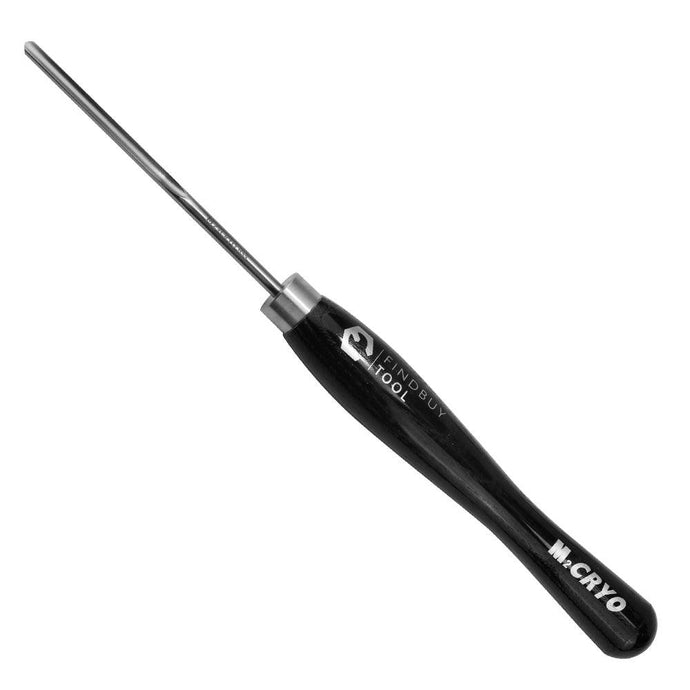Woodturning is a rewarding craft, and one of the most popular projects for turners is creating a bowl. Traditionally, bowl gouges are the go-to tool for this task, designed specifically to handle the stresses and demands of shaping large, hollow objects. However, some woodturners may wonder if it's possible to turn a bowl using a spindle gouge instead. While technically feasible, turning a bowl with a spindle gouge comes with significant challenges and limitations that make it less than ideal for this purpose.
A spindle gouge is primarily designed for working on long, cylindrical objects like chair legs, spindles, and finials. It has a shallow flute and a rounded cutting edge that excels at making detailed, delicate cuts along the grain of the wood. The tool is perfect for creating beads, coves, and smooth curves on smaller pieces, where precision and control are key. However, when it comes to turning a bowl, the nature of the work is fundamentally different from spindle turning, and this is where the spindle gouge's limitations become apparent.
One of the main reasons spindle gouges are not ideal for bowl turning is that they are not designed to handle the forces generated by cross-grain cutting. When turning a bowl, especially from a side grain blank, the wood's fibers are oriented perpendicular to the lathe bed, meaning the tool must cut across the grain. This creates more resistance and requires a tool that can withstand the pressure while making clean, controlled cuts. A bowl gouge, with its deeper flute and stronger profile, is specifically built to handle this type of cutting. The spindle gouge, by contrast, has a thinner shaft and a shallower flute, which makes it more prone to vibration and chatter when used in cross-grain situations. This can result in rough cuts, catches, or even damage to the tool or the workpiece.
Another factor to consider is the amount of material that needs to be removed when turning a bowl. Bowls typically require the removal of large volumes of wood, both on the exterior and when hollowing out the interior. A bowl gouge is designed to remove this material efficiently, with its larger, more robust cutting edge and deeper flute allowing for controlled, aggressive cuts. The spindle gouge, with its smaller and more delicate cutting edge, is not built for such heavy-duty work. Attempting to use a spindle gouge to remove large amounts of material can result in slow progress and greater risk of tool catches, which can lead to dangerous situations, especially for beginners.
Despite these limitations, some experienced woodturners have successfully used spindle gouges to turn bowls, particularly for smaller, shallow bowls or when working with softwoods that are easier to cut. In such cases, the spindle gouge can be employed for lighter cuts or for refining details on the outside of the bowl, where the forces involved are less extreme. For example, the spindle gouge's fine cutting edge can be used to create smooth curves on the exterior or to add decorative features to the rim of the bowl. However, even in these situations, it's essential to use the tool with caution, as it is more prone to catching than a bowl gouge.
Another critical aspect to consider is the bevel angle of the spindle gouge compared to that of a bowl gouge. Spindle gouges typically have a shallower bevel angle, which is perfect for cutting along the grain of a spindle but less effective when cutting across the grain, as is required in bowl turning. The steep bevel of a bowl gouge allows it to maintain contact with the wood surface at the correct angle, providing more control and reducing the risk of a catch. Attempting to use a spindle gouge with its shallower bevel on a bowl can make it harder to maintain this control, leading to a less smooth finish and more difficulty in achieving the desired shape.Safety is another significant concern when using a spindle gouge for bowl turning. The forces involved in bowl turning are higher due to the cross-grain cutting and the larger size of the workpiece. A spindle gouge, being a lighter tool, may not be able to handle these forces safely. Tool catches are more likely, and these can lead to dangerous kickbacks, damaged wood, or even injuries. For this reason, it's generally recommended that beginners and intermediate woodturners stick to using the proper tools, like bowl gouges, for turning bowls to minimize risk and ensure a smoother, more enjoyable experience.
In conclusion, while it is possible to turn a bowl with a spindle gouge, it is not the ideal tool for the job. The spindle gouge is designed for detail work on long, cylindrical pieces and is not built to handle the stresses involved in bowl turning, particularly when cutting across the grain or removing large amounts of material. For those who are serious about bowl turning, investing in a proper bowl gouge is essential for achieving better results, greater safety, and a more enjoyable turning experience. The bowl gouge's robust design, deeper flute, and superior cutting capability make it the right tool for this type of work, allowing you to create beautiful, well-crafted bowls with confidence and ease.

